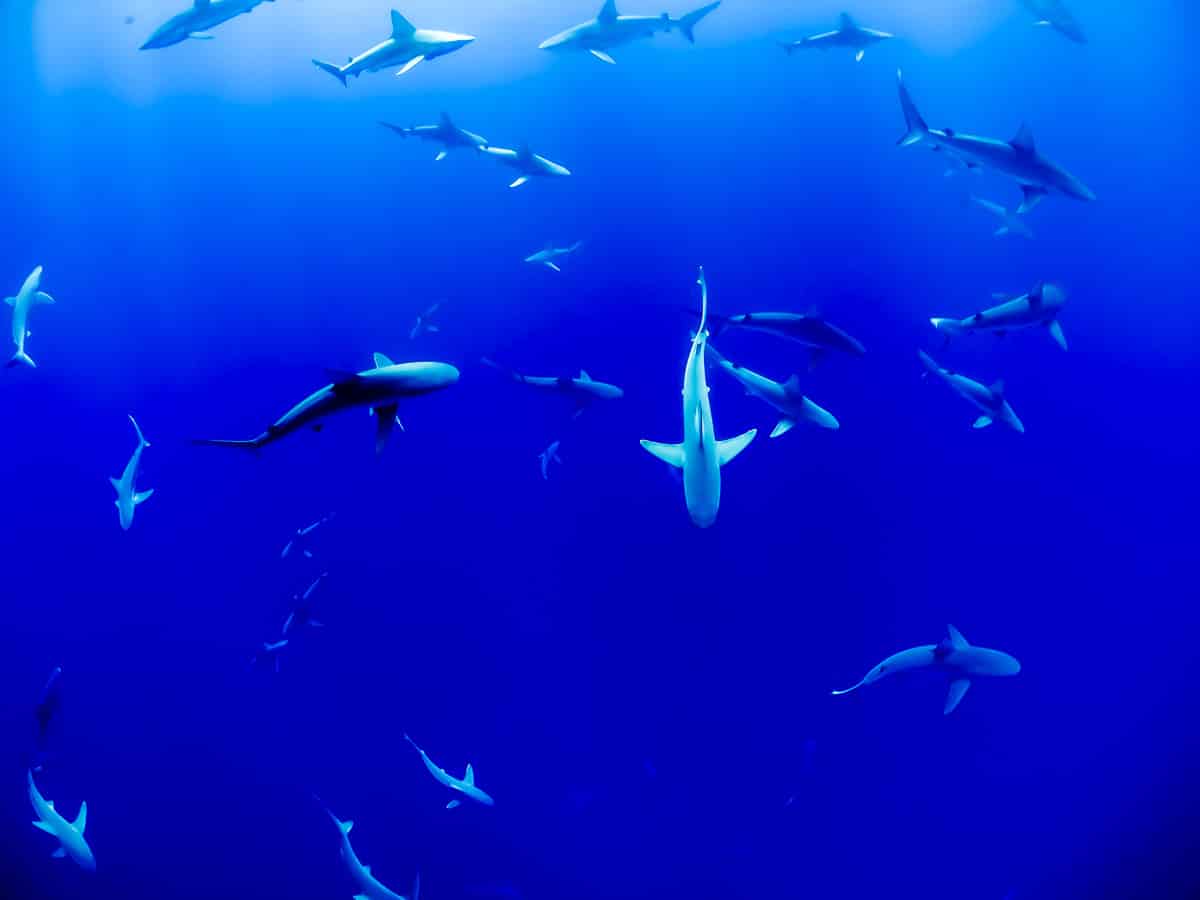A volcanic island chain located in the Pacific Ocean, there is wide variety of best scuba diving in Hawaii options for beginners and advanced divers. Divers can explore shipwrecks, lava tubes, rock formations, inactive volcanic craters, caverns, and caves. Marine life around the islands is very well protected, so expect an abundance of wildlife to interact with at each dive site.
There are hundreds of dive operators across the inhabited islands of Hawaii offering both boat dives, shore dives, and scuba training for new divers. Wreck specialty and night diving certifications are popular in Hawaii for divers looking to add a new certification or two to their logbook.
Hawaii is a popular spot for different types of nesting sea turtles, so the chance of seeing turtles on a dive is high. Whales, sharks, dolphins, and rays of all sizes also frequent the island during different times of the year. Visibility, water temperatures, and air temperatures are favorable year-round, making it one of the top and best scuba diving in Hawaii locations.
BEST SCUBA DIVING IN HAWAII IN 2023
BEST SCUBA DIVING IN HAWAII
Top 10 Destinations
KAUAI Three Fingers
DIFFICULTY
Beginner
DEPTH
25ft to 75ft (8m to 23m)
VISIBILITY
Up to 60ft (18m)
ACCESSIBILITY
Boat dives
NOTABLE SEALIFE
Surgeon fish, Blue striped grunts, Dragon morays
RENOWNED FOR
Best scuba diving in Hawaii & Lava fingers
Located only about 100 feet outside of the harbor in Kauai, Three Fingers is the best scuba diving in Hawaii for everyone from the novice to experts divers. This dive site is appropriately named after three fingers of lava ranging in depth from 25 to 75 feet below the surface. The water is usually clear and calm, attracting all kinds of sea life, making it one of the best places to dive in Hawaii for beginner underwater photographers. The Kauai water temperature is at its warmest in September and coldest in February.
Giant conchs can be spotted along with the rare Dragon moray eel in the rocks, or a sea turtle on occasion. Schools of blue grunts, various species of angelfish, damsels, wrasse, anthias, and surgeonfish frequent this dive site. Visibility is usually between 50 to 60 feet but can be reduced if the swells come in from the south, but still rated as the best scuba diving in Hawaii.
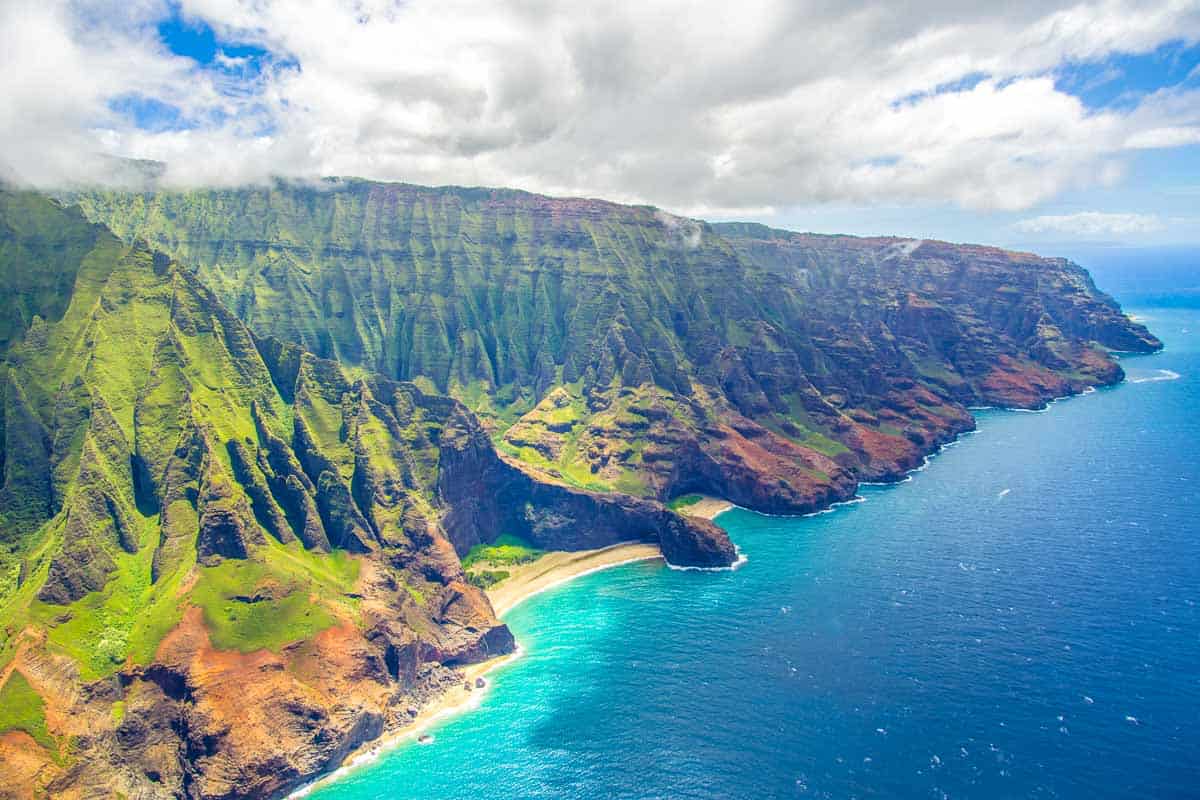
BIG ISLAND Manta Village
DIFFICULTY
Beginner
DEPTH
30ft to 80ft (9m to 24m)
VISIBILITY
Up to 30ft (12m)
ACCESSIBILITY
Boat dive
NOTABLE SEALIFE
Manta rays, Microscopic plankton, Morays
RENOWNED FOR
Giant manta rays at night
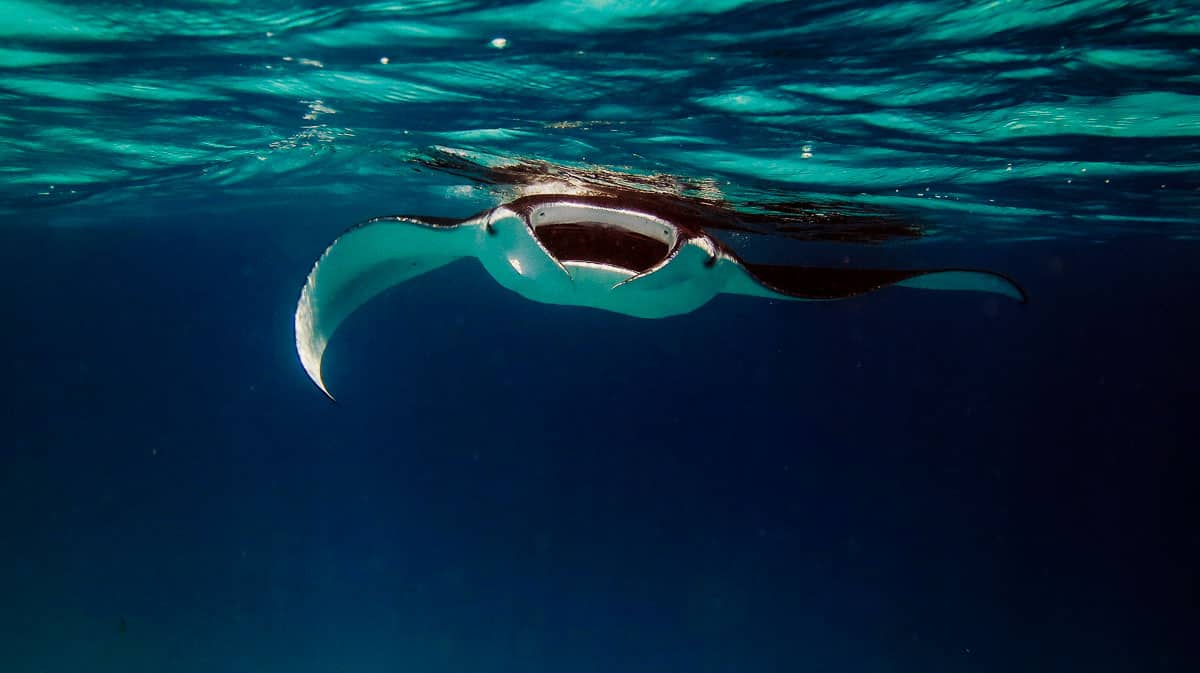
The manta ray night dive is considered by top dive publications to be one of the best scuba diving in Hawaii big island dive sites and even the best in the world. After taking a sunset boat ride to one of the Kona dive sites, divers jump in for the experience of a lifetime.
Scuba divers carry dive lights on this shallow night dive that attract microscopic plankton. These plankton make a tasty meal for the giant manta rays that swim in from the darkness and around divers kneeling on the ocean floor. You can also see curious and hungry moray eels on this dive. Due to the shallow depth, this night dive is perfect for beginners. The dive is the best scuba diving in Hawaii for divers who like longer bottom times, with dive times ranging from 50-60 minutes.
Kona water temperatures are in the low- to mid-70s during the winter, and they rise to the low 80s in late summer and early fall.
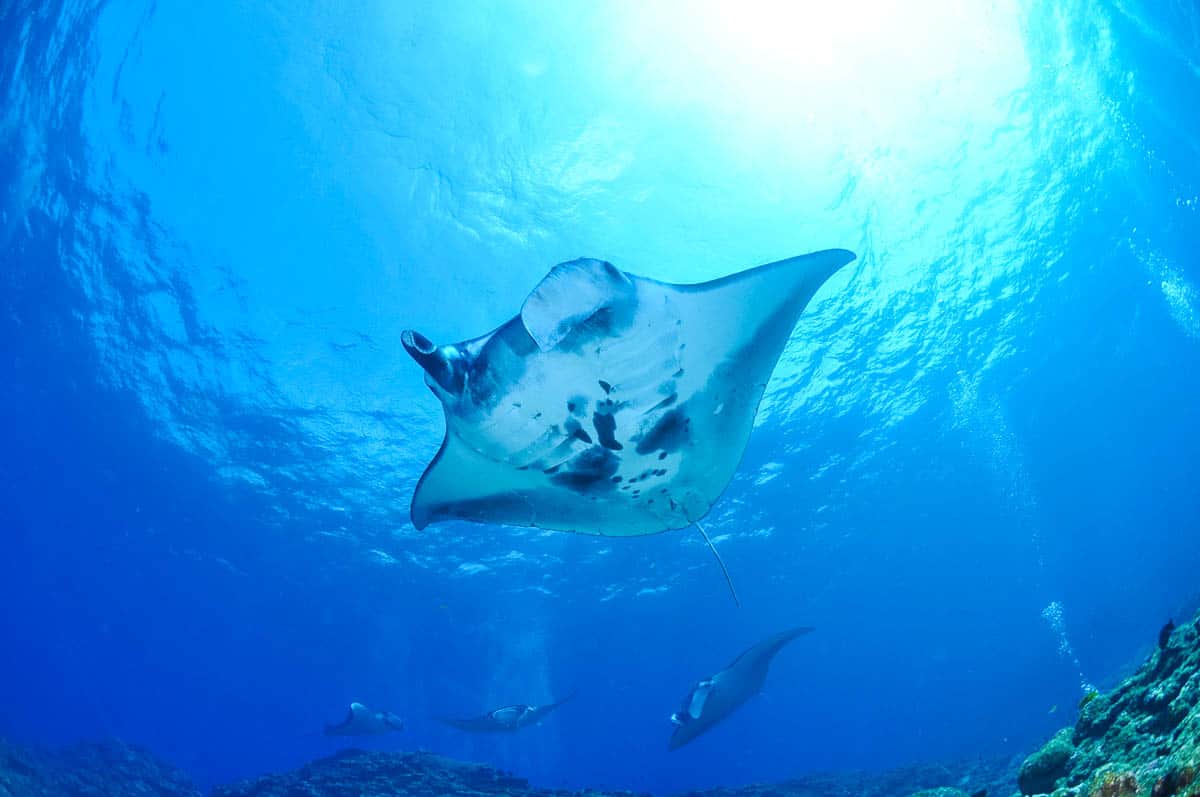
OAHU Kahuna Canyon
DIFFICULTY
Beginner/Intermediate
DEPTH
35ft to 100ft (10m to 30m)
VISIBILITY
Up to 100ft (30m)
ACCESSIBILITY
Boat dives
NOTABLE SEALIFE
Unicorn surgeonfish, Amberjack, Ulua
RENOWNED FOR
Large fish
Commonly known as Hawaii’s Grand Canyon, Kahuna Canyon is a bowl-shaped crater near Mokule’ia of the north shore of Oahu. This dive site is home to some of the best diving in Oahu. The bottom of this former volcanic crater sits at around 100 feet and 35 feet at the top. The canyon is 200 yards long extending towards the shore.
Kahuna Canyon is made up of various coral formations, making it a popular spot for parrotfish, Ulua (giant trevally), moray eels, lobsters, amberjack and unicorn surgeonfish. This dive site is also known for cave diving in Hawaii. The visibility and water conditions are extraordinary, starting in May to September for the best scuba diving in Hawaii, but high surf makes this dive site dangerous or impossible to dive between October through April.
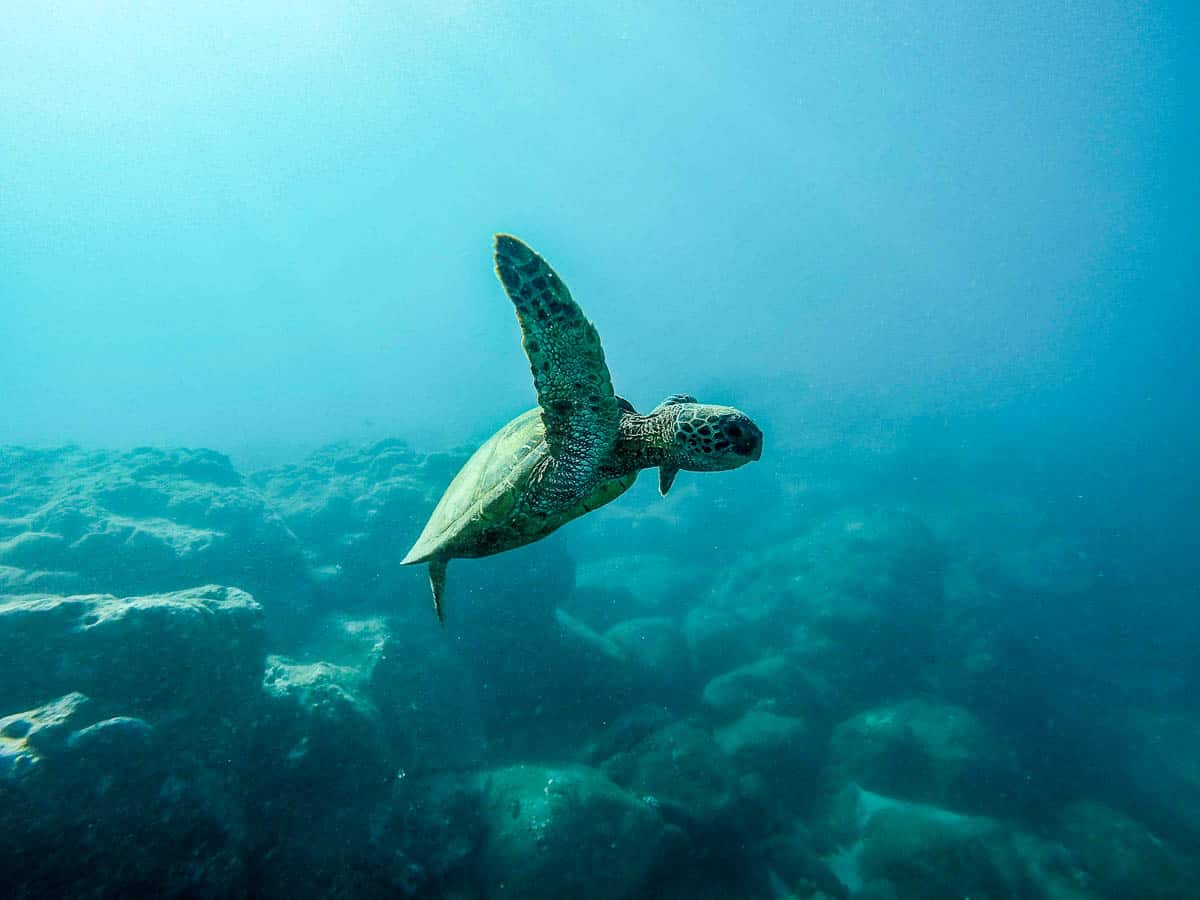
OAHU Sea Tiger
DIFFICULTY
Intermediate/Advanced
DEPTH
80ft to 100ft (24m to 30m)
VISIBILITY
Up to 100ft (30m)
ACCESSIBILITY
Boat dives
NOTABLE SEALIFE
Eel, Reef sharks , Eagle rays
RENOWNED FOR
Easy Access from Honolulu, Submarine may be seen on dives
Sunk in 1999 as an artificial reef, the Sea Tiger is still one of the newer Oahu dive sites but is a flourishing wreck. A former Chinese trading vessel, seized by the Coast Guard for illegal activities, this large ship is roughly 165 feet in length and around 40 feet wide. It is located off the south shore of Oahu, near Honolulu.
The Sea Tiger can be penetrated through cargo holds and passageways on the outside of the ship. The interior cabins are restricted. Due to the passing currents, numerous species of marine life are attracted to the wreck including squirrelfish, filefish, morays, and passing reef sharks or eagle rays. The shipwreck is still mostly intact and is also visited almost daily by the Atlantis submarine. Some dive operators also visit deep wrecks like this one on a night dive in Oahu.
MAUI Carthaginian II
DIFFICULTY
Intermediate
DEPTH
80ft to 95ft (24m to 28m)
VISIBILITY
Up to 70ft (21m)
ACCESSIBILITY
Boat dives
NOTABLE SEALIFE
White tip reef sharks, Squirrelfish, Frogfish
RENOWNED FOR
Old Whaling Museum, Atlantis Submarine may be seen on dives
The Carthaginian II, now an artificial reef frequently visited by the submarine, was formerly used as a whaling museum in the Lahaina Harbour in Maui. It is one of the best places to scuba dive in Maui. The ship was sunk in 2005 by the Atlantis Submarine company and has become a flourishing gathering place for sea life squirrelfish, eels, starfish and eagle rays.
The Carthaginian II is semi-penetrable, and divers have been known to see white tip reef sharks resting inside the wreck. Frequently visited by the Atlantis Submarine, divers can also stop to pose for a photo with the submarine.
MAUI Molokini Crater Inside
DIFFICULTY
Beginner
DEPTH
40ft to 60ft (12m to 18m)
VISIBILITY
Up to 150ft (45m)
ACCESSIBILITY
Entry from the boat
NOTABLE SEALIFE
Garden eels, Butterflyfish, Octopus
RENOWNED FOR
Excellent visibility year-round
Molokini Crater is a protected reef just off the coast of Maui. Due to the diversity in depth, the wide variety of marine species, and excellent visibility year-round, this dive site is among the best diving in Maui for all types of divers and snorkelers. The middle reef is home to butterflyfish and trumpet fish and slopes down to a sandy edge where you can find garden eels. Divers can stay in depths of 40 to 60 feet and will see an abundance of hard coral, tropical fish, and nudibranchs. Most dive operators offer a 2-tank dive on the inside of Molokini Crater.
The backside is a drift and wall dive for experienced divers only. The vertical wall drops to the bottom of the ocean floor at 360 feet. Most divers stay at around 80 feet to be on the lookout for large schools of tropical fish, reef sharks, spinner dolphins, and manta rays. Humpback whales have also been spotted here during whale season. Some consider Maui to the best Hawaiian island for scuba diving.
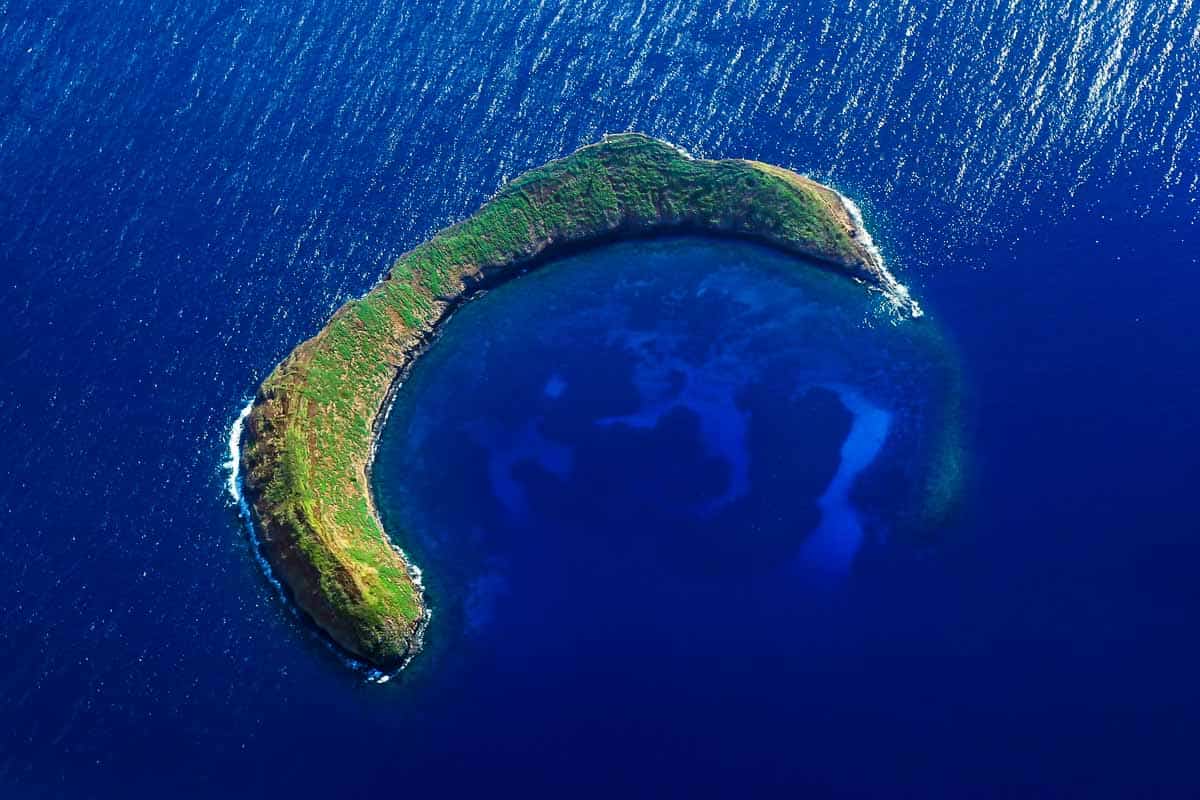
MOLOKAI Fish Rain
DIFFICULTY
Advanced
DEPTH
80ft to 100ft (24m to 30m)
VISIBILITY
Up to 100ft (30m)
ACCESSIBILITY
Entry from the boat
NOTABLE SEALIFE
Whale sharks, Monk seals, Mahi-Mahi
RENOWNED FOR
Strong currents and rare pelagic fish species
Famous among Molokai diving is Fish Rai. Fish Rain is an advanced drift dive due to strong currents. Hammerhead sharks, tiger sharks, monk seals, and gigantic whale sharks have been spotted at this dive site, as well as a large variety of tropical fish species.
Monk seals were added to the endangered species list so a sighting may be rarer. Because this is a drift dive, divers will enter and exit the water at different points and should stay with their dive guide unless instructed otherwise.
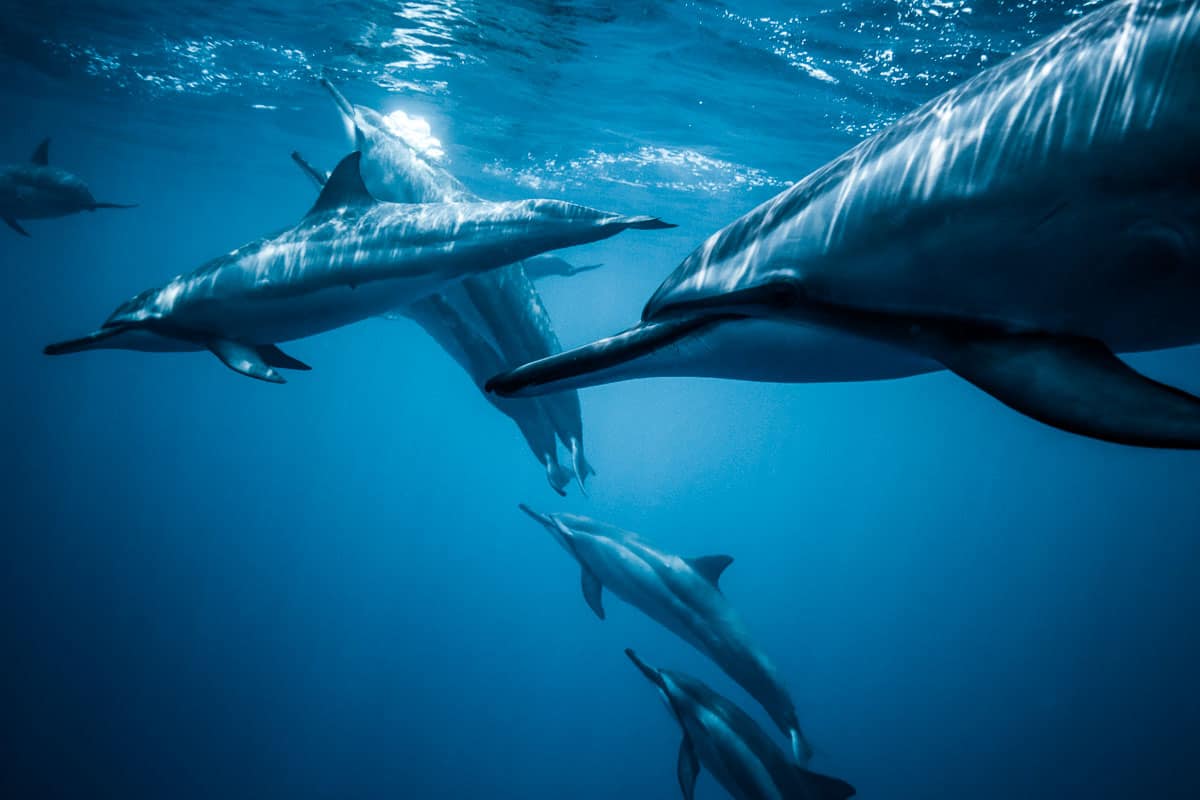
LANAI First Cathedral
DIFFICULTY
Intermediate/Advanced
DEPTH
45ft to 60ft (13m to 18m)
VISIBILITY
Up to 100ft (30m)
ACCESSIBILITY
Entry from the boat
NOTABLE SEALIFE
Moorish idol, Crabs, Octopus
RENOWNED FOR
Lava tube with various cavern-like chambers
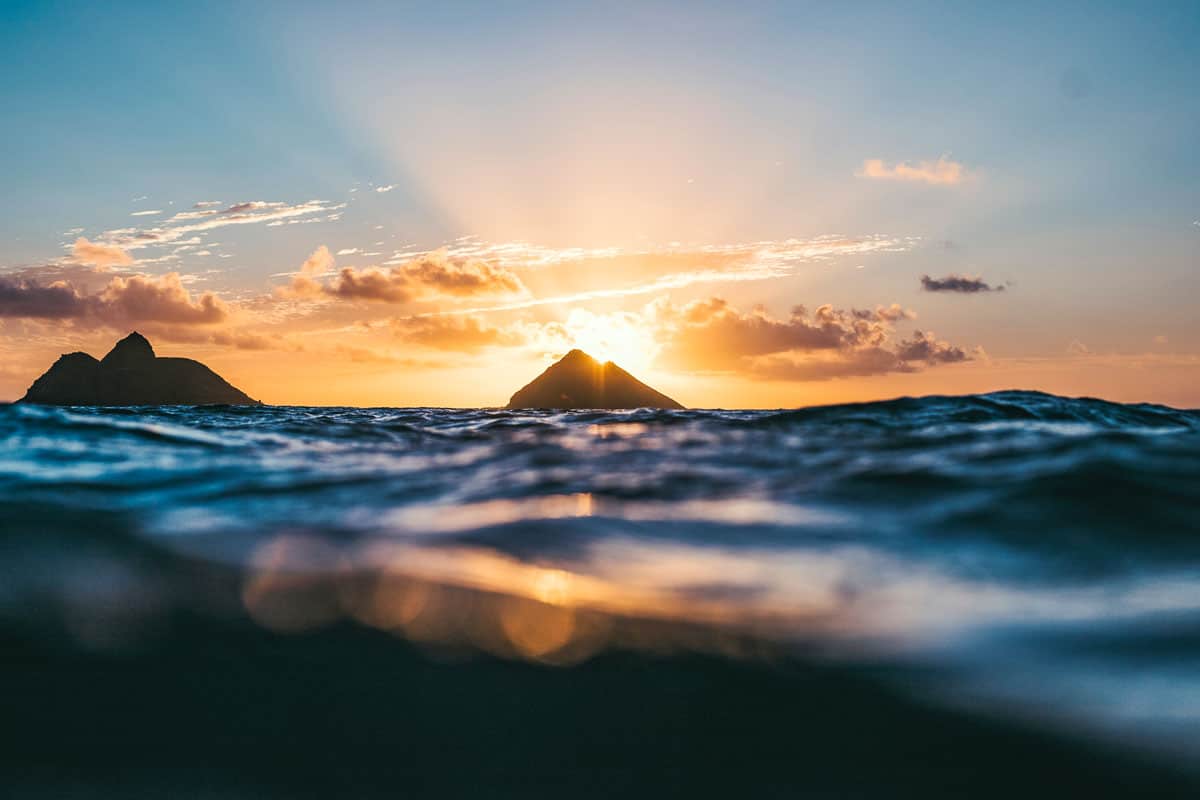
Lanai is easily one of the best places to dive in Hawaii. Lanai is a popular dive destination for scuba divers visiting the island of Maui due to its proximity. First Cathedral is a large lava tube that is nearly two stories high and 100 feet in length. This dive site got its name because of the cathedral-like experience from the sun rays entering the ceiling of the tube.
First Cathedral has different rooms and passageways that are popular hideouts for lobsters, crabs, and the occasional white tip reef shark. Strong surf can limit entry into certain areas of the cavern.
BEST SCUBA DIVING IN HAWAII
Scuba Diving Guide
BEST DIVING MONTHS
The best scuba diving in Hawaii falls between the months of May, June, and July due to the calm waters, excellent visibility, and low rainfall. May to mid-June is the most cost-effective time to visit for diving.
HIGHEST RAINFALL
November – 6.95 inches/176.5 mm
December – 7.13 inches/181.2 mm
March – 7.1 inches/180.4mm
COLDEST WATER TEMPERATURE
January – 76.46 F/ 24.7 C
February – 75.92 F/ 24.4 C
March – 75.56 F/ 24.2 C
BEST SCUBA DIVING IN HAWAII
Traveler's Guide
TIME ZONE: UTC-10:00
CURRENCY: United States Dollar (USD)
CALLING CODE: +1
ELECTRIC VOLT: 120 V
PLUG TYPE: A and B
MAIN AIRPORT: Daniel K. Inouye International Airport (HNL)
BEST SCUBA DIVING IN HAWAII
FAQs
1. Where is the best scuba diving in Hawaii?
The volcanic island chain of Hawaii is known as the best scuba diving in Hawaii. Scuba divers who like to see “the big stuff” will not be disappointed when diving at any of the Hawaiian islands. The manta ray night dive on the Big Island is known as the top night dive and is a popular best scuba diving in Hawaii for every diver from beginner to advanced.
The “back wall” of the Molokini crater is also said to be one of the best wall dives but is only for advanced divers due to the strong currents and deeper depths. Many divers have spotted large humpback whales, sharks, or dolphins on many of the dive sites throughout Hawaii. Shore diving and boat diving are both popular options for scuba divers, depending on what you want to see and your certification level.
2. Do I need a wetsuit to dive in Hawaii?
It is recommended to wear a wetsuit when diving in Hawaii. The water temperatures vary from 77 degrees Fahrenheit (25 Celcius) in the wintertime to 82 degrees Fahrenheit (28 Celcius) in the summertime. These temperatures may seem warm for some, but when diving, especially to deeper depths you may encounter thermoclines with colder water temperatures. If you are planning to do more than one dive per day, having a wetsuit will help keep you warm on multiple dives. Most dive shops rent divers 3mm or 5mm wetsuits. Divers who get cold quickly should also plan to bring a scuba hood to keep their head and neck warm while diving.
3. How much does scuba diving cost in Hawaii?
Scuba diving in Hawaii is not the cheapest in the world, but the dive operators do offer discounted rates for multiple dive packages. Depending on how many dives and what type of dive you are planning to do (2-tank, 3-tank, night dive, beginner dive, etc.), plan to spend between $90-350USD, or more, when diving in Hawaii. Many dive operators also offer discounts if you bring your dive gear instead of renting equipment from the shop. Either way, always research prices online or call a few shops on the island you are planning to visit before your arrival.
4. How old do you have to be to go scuba diving in Hawaii?
In Hawaii, the minimum age for scuba diving follows the PADI (Professional Association of Dive Instructors) standards. Children ages 10-14 can experience Discover Scuba Diving or complete training for the Junior Open Water Certification through PADI. Junior Open Water divers ages 10 and 11 must dive with a PADI Professional or a certified parent or guardian, and dives cannot exceed 40 feet/12 meters. Divers 12 to 14 years old must dive with a certified adult and dives cannot exceed 60 feet/18 meters.
Some dive shops may also offer PADI’s Bubblemaker experience, which allows 8 and 9-year-old children to try scuba diving in either a pool or on a shallow reef, venturing to a maximum depth of 6 feet/2 meters. Contacting dive shops before visiting Hawaii to confirm their minimum age for diving is recommended.
5. Is Maui good for scuba diving?
Maui has been said to be one of the best scuba diving in Hawaii and in the world. The temperate clear blue water, high visibility, and the large variety of marine life, big and small, make Maui a good place for all divers. Divers who like to take photos should bring a camera along on their dives. Due to its proximity to the nearby island of Lanai, many dive operators in Maui also offer day trips to explore the dive sites of both Maui and Lanai.
6. What is the name of scuba diving company in Honolulu, Hawaii?
Honolulu Scuba Company is one of the top-rated best scuba diving in Hawaii company located in Honolulu, Hawaii on the island of Oahu. Honolulu Scuba Company offers scuba and snorkeling excursions as well as equipment rentals and scuba lessons. This shop also offers the only scuba shark dive experience on the island. This experience allows divers to come face to face with sharks in the Sea Life Park shark tank aquarium. For non-certified divers, Honolulu Scuba Company has a Discover Scuba Diving program.
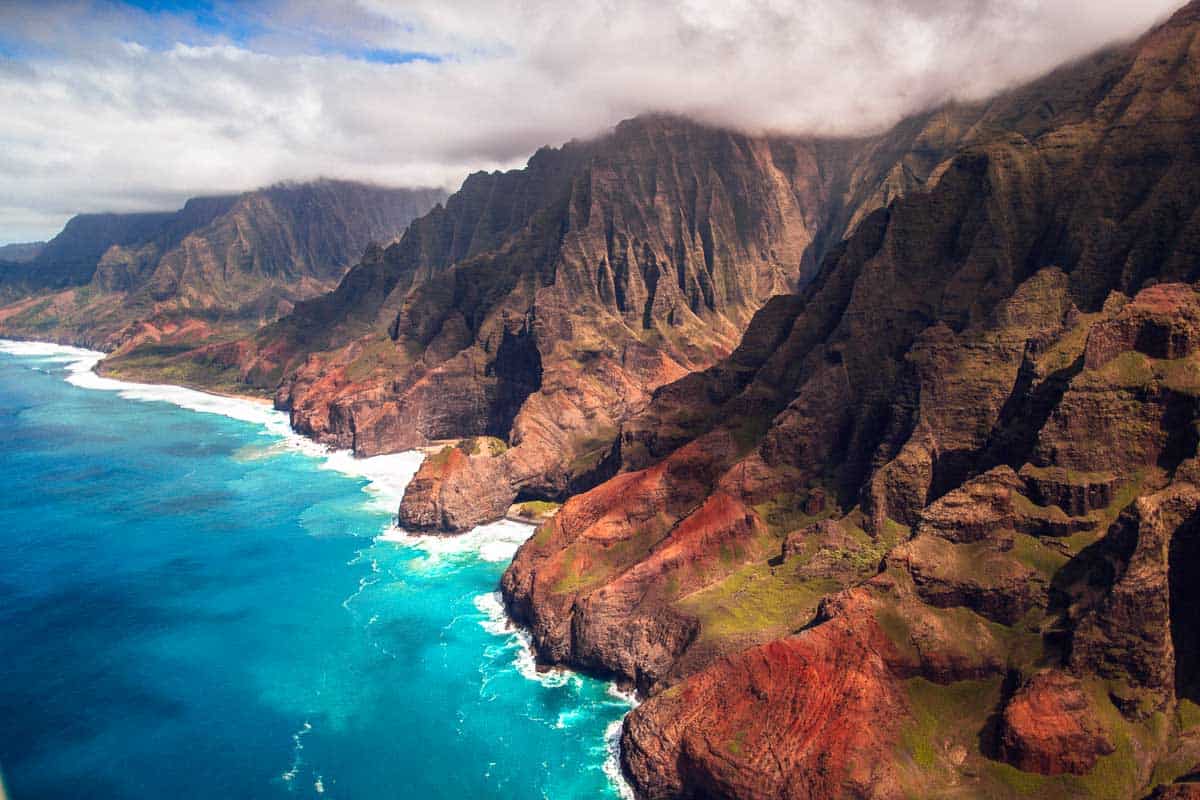
REACH OUT
If you enjoyed our article but would prefer diving on the east coast instead, fret not, we have put together some great content on the best scuba diving spots in Florida and Kauai as well.
As always, we create our content with you – our fellow divers – in mind. So, how’d we do? Was this informative? Do you think our rankings are out of whack? Or perhaps you just have a few golden nugget tips you’d like to share with our happy ocean-loving community? We’d love to hear from you below.
Thanks for reading and we hope your next adventure is a great one – Keep Diving Blue!


